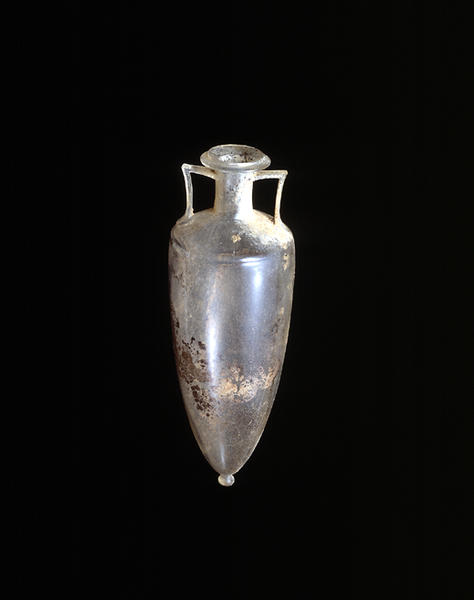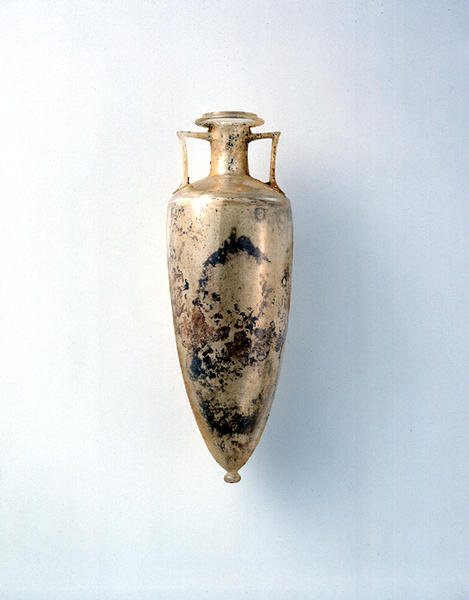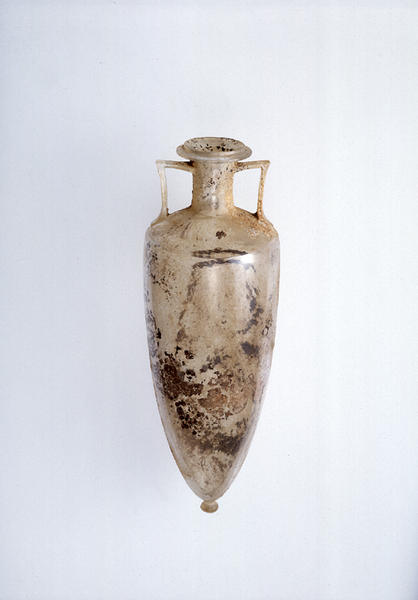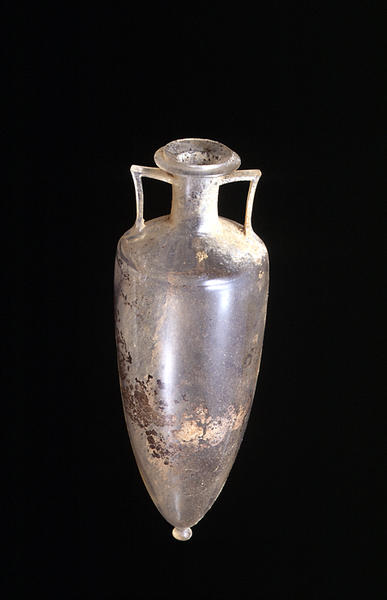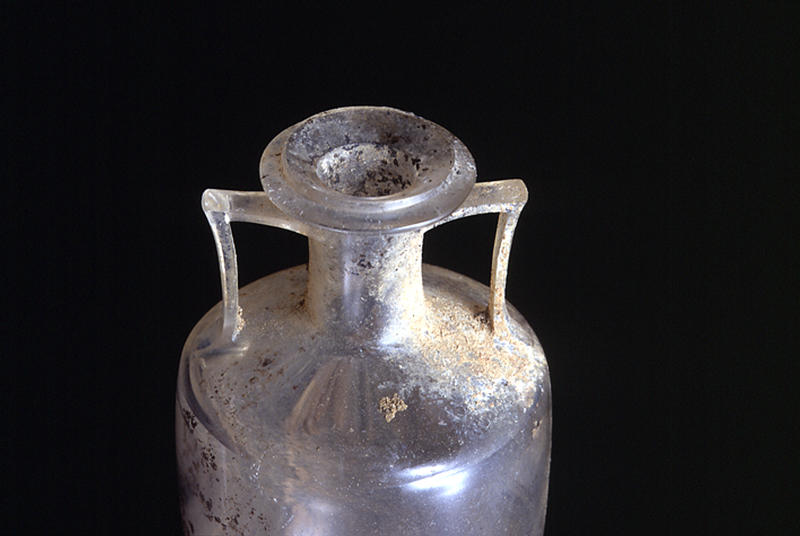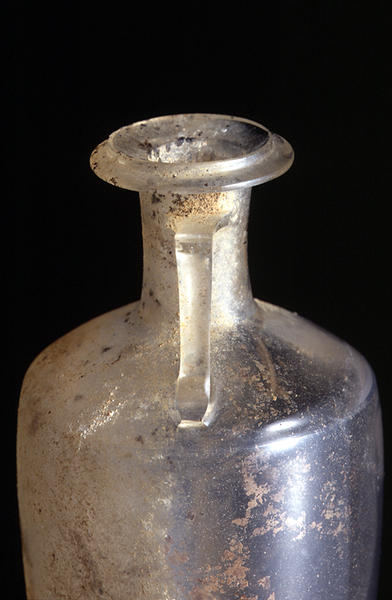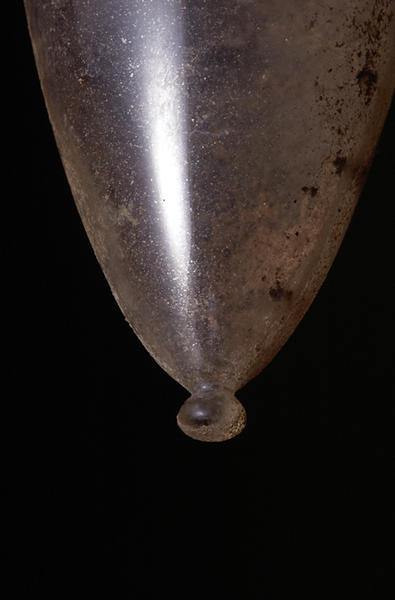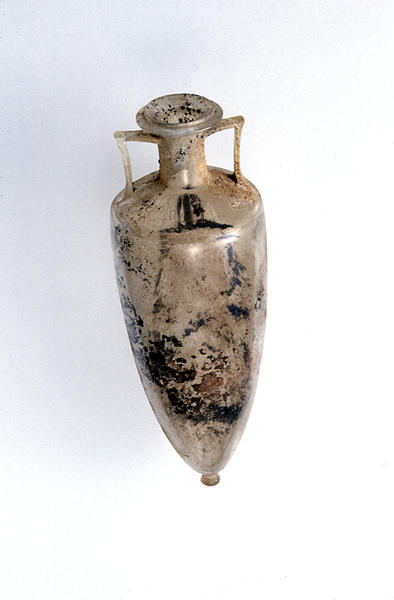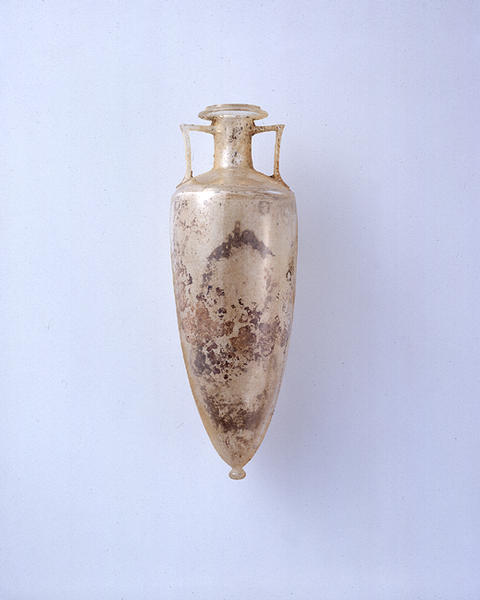Amphora
- Greece
- 2nd - 1st centuries B.C.
- Rock crystal
- H-13 D-2
Catalogue Entry
This amphora was carved out of a single piece of crystal. The end of the long conical body is finished in a small button-shaped base. The shoulders are clearly carved away with the vertically extended neck topped by a mouth with wide, flat flange. Two handles extend up from the shoulders to the top of the neck in sharply carved, right angled forms. The walls of the vessel are thin, with the entire interior of the vessel hollowed out. Scrape marks moving in a horizontal direction can be observed on the surface of the vessel, but it is not clear how this type of thin-necked vessel was hollowed out. This amphora shows extremely high aesthetic qualities in spite of the difficulties involved in its manufacture. Undoubtedly the pure unsullied beauty of the kind of transparent stone seen in this work fascinated the people of antiquity. The development of translucent glass was probably an experiment in the artificial creation of this kind of beauty.
Catalogue Entry(Bac#026)
2nd‐1st century B.C.
Rock crystal
H. 13.0 cm, Mouth dia. 2.0 cm
This small amphora was cut from a single lump of crystal. The shoulders swell beneath the narrow neck, to then fall in a narrow bullet shape to a small dotted finial. Small hook-shaped handles are cut away between the shoulder and neck. By the middle of the 2nd millennium BC the Minoan culture in the eastern Mediterranean had already begun to carve elegantly superb stone vessels and seal stones with intricately carved designs. The Mycenaean culture of mainland Greece then continued these traditions. This crystal amphora is undoubtedly part of this tradition, and the superior skill shown in the dangerously fragile handles and in the ability to carve out the interior through this narrow neck can be considered some of the top-flight skills of the precious gem craftsmen of Greece.
